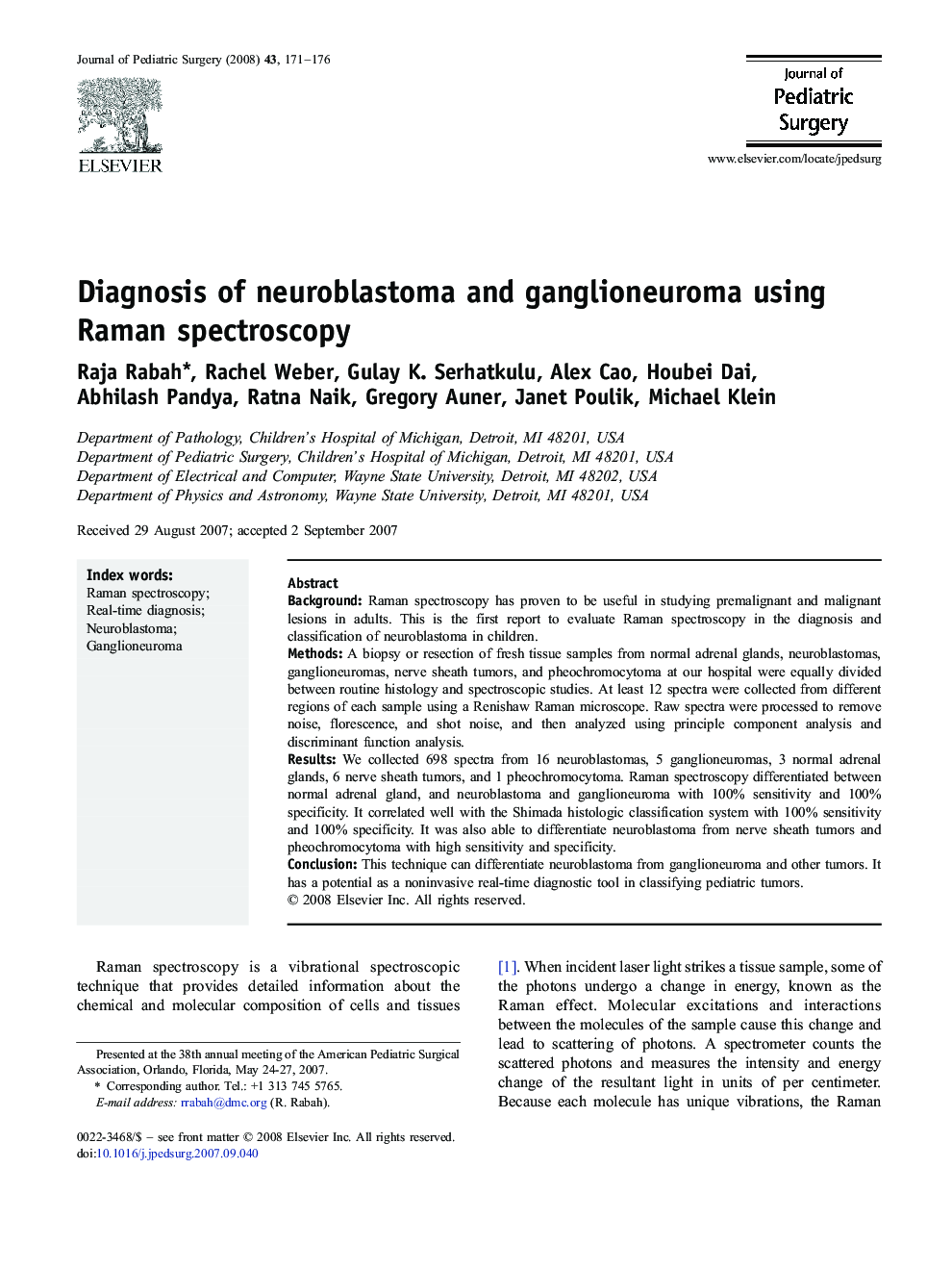| Article ID | Journal | Published Year | Pages | File Type |
|---|---|---|---|---|
| 4159211 | Journal of Pediatric Surgery | 2008 | 6 Pages |
BackgroundRaman spectroscopy has proven to be useful in studying premalignant and malignant lesions in adults. This is the first report to evaluate Raman spectroscopy in the diagnosis and classification of neuroblastoma in children.MethodsA biopsy or resection of fresh tissue samples from normal adrenal glands, neuroblastomas, ganglioneuromas, nerve sheath tumors, and pheochromocytoma at our hospital were equally divided between routine histology and spectroscopic studies. At least 12 spectra were collected from different regions of each sample using a Renishaw Raman microscope. Raw spectra were processed to remove noise, florescence, and shot noise, and then analyzed using principle component analysis and discriminant function analysis.ResultsWe collected 698 spectra from 16 neuroblastomas, 5 ganglioneuromas, 3 normal adrenal glands, 6 nerve sheath tumors, and 1 pheochromocytoma. Raman spectroscopy differentiated between normal adrenal gland, and neuroblastoma and ganglioneuroma with 100% sensitivity and 100% specificity. It correlated well with the Shimada histologic classification system with 100% sensitivity and 100% specificity. It was also able to differentiate neuroblastoma from nerve sheath tumors and pheochromocytoma with high sensitivity and specificity.ConclusionThis technique can differentiate neuroblastoma from ganglioneuroma and other tumors. It has a potential as a noninvasive real-time diagnostic tool in classifying pediatric tumors.
